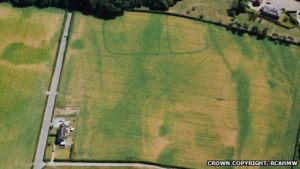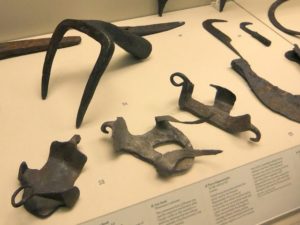Below is a detailed article about agriculture in Roman Britain. We need to understand that Britain was occupied by the Celtic Tribes that were occupying the British territories. Each of them was ruled by a monarch. They were friendly to their neighbours. The most essential of their community were the farmers and the farmworkers. Each farm had to supply a proportion of grain so as to satisfy the ongoing need for food. Britain was entirely an agricultural country. The farmers had to supply the whole tribe of England.
During the Celtic times, there were no storage places or warehouses for the crops or vegetables cultivated. There was no room for any surplus produced item. The growth of the crops was based purely on immediate need.
How was farming in Roman Britain?
The Romans entered Britain in 55 BC with the invasion of Julius Caeser. Many Romans occupied areas of Kent during this time. Hence, production had to increase. The Romans sold the surplus and dealt with areas of Gaul. Hence, the Romans started to export in Britain.
After the Claudian invasion of Britain in 43 AD, Roman Britain became the biggest seller of wheat in Europe. Due to their various acquisitions, Roman Britain had a secure buyer for all their readymade products.

Even if there were no locals to buy the products the army was always stationed at various places. There was also a tax levied by the Romans – Annona Militaris which was paid in the form of production by the farmers. The amount that was paid was calculated on the percentage of the crop. However, this method pressurized farmers to increase their productivity.
The taxable portion was taken by the Roman soldiers and the farmers were left with very little for themselves or for the tribe. New Roman towns were being formed which enabled the farmers to get rid of the surplus produce. Due to the Roman roadways and settlements, it became easier to trade crops across cities. Transportation became easier and crops were being rotated to places. Not only that, each tribe had its own farming method that the others were now allowed to explore.
Roman currencies became stronger as a result of this success in the production and distribution of crops. The currency system was revived and people could exchange new currency in place of old.
However, due to the new Roman towns and settlements, people were concentrated in one commercial area. This meant that there were fewer people working on Roman Britain farm. The Roman towns occupied more land and the population was increasing day by day. This meant that there were few farmers and more people to feed. This brought in the unused land to be used for farming and a slight decrease in the forest cover.
Towns like Colchester and London also had their surroundings increase with settlements. This land was used for farming earlier. Such events led to the Boudiccan revolt.
Instruments used for agriculture in Roman Britain

A heavy plow was used for plowing the land in a Roman Britain farm which was pulled by an ox. The Romans developed more and more effective tools that helped the situation. They used plow that could cut the soil deeper and turned to one side. This was much more effective than the Celtic plow.
They also used a double hand scythe. This made cutting cereal crops much faster.
Farming Innovations by the Romans
Storage was still an issue in Roman Britain. The crops began to get soggy and useless. Therefore, the Romans came up with large storage ovens where the surplus corn was dried in and heated in an internal fit furnace. It was made of stone and bricks. The grains were spread over a higher surface and heat was provided from beneath. This kept the crops intact.
Animal husbandry became more effective after the Romans came in. Careful breeding was done and cows, sheep, and pigs were reared by the people. This provided a much better quality of meat and dairy products. Eggs were produced and wastage became very less. The diet improved and standard of living and nutrition was appreciated.
The system of farming in provinces and simply providing the tribespeople, completely stopped. It became more commercialized. One agricultural activity led to a number of employments.
